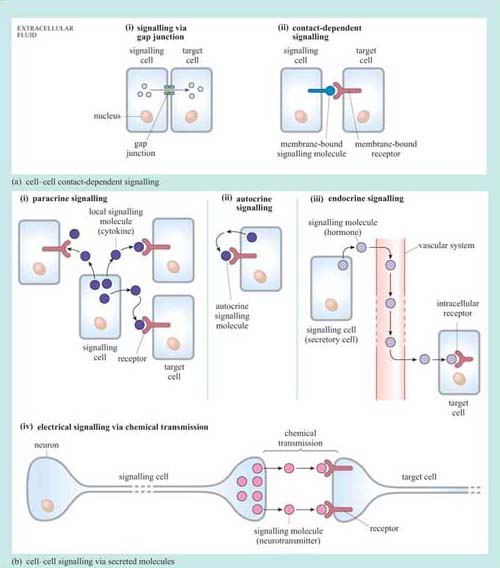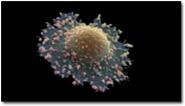1.2 Extracellular signals can act locally or at a distance
First we shall consider the general types of intercellular signalling mechanism within multicellular organisms (Figure 3). Broadly speaking, cells may interact with each other directly, requiring cell–cell contact, or indirectly, via molecules secreted by one cell, which are then carried away to target cells.

Figure 3 The major types of signalling mechanisms found in multicellular organisms. (a) Signalling that depends on contact between cells: (i) via gap junctions; (ii) via cell surface molecules, in which both the ligand and the receptor are located on the plasma membrane of the signalling cell and the target cell. (b) Signalling that depends on secreted molecules (which are mainly water-soluble). (i) Paracrine signalling, in which signalling molecules (cytokines) are released and act locally on nearby cells.(ii) Autocrine signalling, in which signalling molecules are released and then act on the cell that produced them. (iii) Endocrine signalling, in which signalling molecules (hormones) are released from specialized cells and carried in the vascular system (bloodstream) to act on target cells at some distance from the site of release; depending on the nature of the ligand, the receptor can be on the membrane or be intracellular (as shown here). (iv) Electrical signalling, in which the signalling cell transmits information in the form of changes in membrane potential along the length of the cell; the electrical signal is transferred from the signalling cell (here a neuron) to the target cell, either in chemical form (as a neurotransmitter) or via gap junctions.
